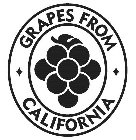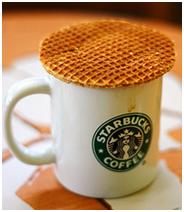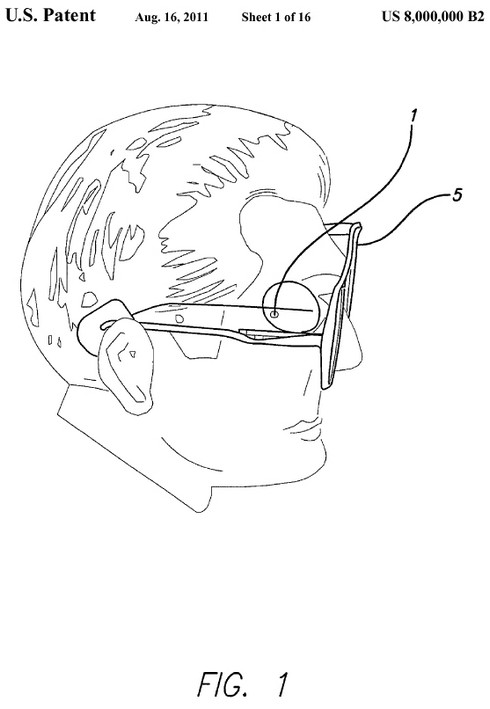By Jason Rantanen
Classen Immunotherapies, Inc. v. Biogen Idec (Fed. Cir. 2011) Download 06-1634-1649
Panel: Rader (offering "additional views"), Newman (author), Moore (dissent)
There is no doubt that the Federal Circuit continues to struggle mightily with Section 101. If Myriad were not enough evidence of this, Classen Immunotherapies – and Judge Rader's additional views in particular – should remove all doubt.
Classen Immunotherapies holds three patents that it contends are infringed by virtually everyone: Patent Nos. 6,638,739; 6,420,139; and 5,723,283. According to the patents, their inventor, Dr. Classen, has discovered that "the schedule of infant immunization for infectious diseases can affect the later occurrence of chronic immune-mediated disorders…and that immunization should be conducted on the schedule that presents the lowest risk with respect to such disorders." Slip Op. at 5. Claim 1 of the '739 patent is illustrative of Classen's broad claim scope:
1. A method of immunizing a mammalian subject which comprises:
(I) screening a plurality of immunization schedules, by
(a) identifying a first group of mammals and at least a second group of mammals, said mammals being of the same species, the first group of mammals having been immunized with one or more doses of one or more infectious disease-causing organism-associated immunogens according to a first screened immunization schedule, and the second group of mammals having been immunized with one or more doses of one or more infectious disease-causing organism-associated immunogens according to a second screened im-munization schedule, each group of mammals having been immunized according to a different immunization schedule, and
(b) comparing the effectiveness of said first and second screened immunization schedules in pro-tecting against or inducing a chronic immune-mediated disorder in said first and second groups, as a result of which one of said screened immuni-zation schedules may be identified as a lower risk screened immunization schedule and the other of said screened schedules as a higher risk screened immunization schedule with regard to the risk of developing said chronic immune mediated disorder(s),
(II) immunizing said subject according to a subject immunization schedule, according to which at least one of said infectious disease-causing organism-associated immunogens of said lower risk schedule is administered in accordance with said lower risk screened immunization schedule, which administration is associated with a lower risk of development of said chronic immune-mediated disorder(s) than when said immunogen was administered according to said higher risk screened immunization schedule.
Classen asserts that the '139 and '739 patents are infringed "when a health care provider reads the relevant literature and selects and uses an immunization schedule that is of lower risk for development of a chronic immune-mediated disorder." Slip Op. at 7. According to Classen, this includes "the act of reviewing the published information, whether or not any change in the immunization schedule is made upon such review." Id. The '283 patent is similar, except that it does not include the subsequent step of selecting an immunization schedule. Classen asserts that the '283 patent is infringed "when a person reviews relevant information, whether the person is a producer of vaccines, a health care provider, or a concerned parent." Slip Op. at 8. The three patents list several hundred preexisting references relating to immunization schedules, the occurrence of immune-mediated disorders, and studies and reports from the field.
The district court granted summary judgment of invalidity of the asserted claims on the ground that they claimed an abstract idea. On initial appeal, the CAFC affirmed, with Judge Moore penning an extremely short affirmance. Following Bilski, the Supreme Court grant-vacate-remanded the case to the Federal Circuit, where it was assigned to the panel of Rader, Newman, and Moore.
The Majority: Writing for herself and Judge Rader, Judge Newman concluded that while the '283 patent failed to satisfy Section 101, the '139 and '739 patent did. Although the '139/'739 patents included a mental step, "precedent has recognized that the presence of a mental step is not of itself fatal to § 101 eligibility." Slip Op. at 15. Because the claims of these patents include the physical step of immunization, the majority held, they were directed to a "specific, tangible application." Slip Op. at 18. This was sufficient to assure the majority, which declined to offer any additional reasoning, of their subject matter patentablity. On the other hand, the majority held, the '283 patent attempted to claim an abstract idea unfettered to any physical steps. Thus, it was invalid under Section 101.
The Dissent: Judge Moore disagreed entirely. "While I confess the precise line to be drawn between patentable subject matter and abstract idea is quite elusive, at least for me, this case is not even close." Dissent at 6. All three claims simply constitute abstract subject matter: "Having discovered a principle – that changing the timing of immunization may change the incidence of chronic immune mediated disorders – Classen now seeks to keep it for himself." Dissent at 8. While Judge Moore reserves her harshest criticism for the '283 patent, her views on the '139/'739 reach the same conclusion. "The immunization step of the '739 patent, like updating the alarm limit in Parker v. Flook, 437 U.S. 584 (1978), is nothing more than post-solution activity." Id. at 9. That post-solution activity "does not transform the unpatentable principle – that a correlation exists between vacination schedules and incidence of chronic immune disease – into a patentable process.' Id. at 10.
Judge Rader's Additional Views: In an unusual move, Judge Rader, joined by Judge Newman, wrote separately to express frustration with the constant use of Section 101 challenges by accused infringers.
In the last several years, this court has confronted a rising number of challenges under 35 U.S.C. § 101. The language of § 101 is very broad. Nevertheless, litigants continue to urge this court to impose limitations not present in the statute.
For a variety of policy reasons, Judge Rader urges, "[t]his court should decline to accept invitations to restrict subject matter eligibility." Rader additional views at 2. Chief among these is the problem that "eligibility restrictions usually engender a health dose of claim-drafting ingenuity," evasions that "add to the cost and complexity of the patent system and may cause technology research to shift to countries where protection is not so difficult or expensive." Id. at 3.
Comments: I am troubled by several aspects of the court's opinions. Particularly concerning is the majority's apparent desire to abdicate the subject matter inquiry altogether, a desire expressed both implicitly, in the majority opinion's unwillingness to offer any substantive reasoning to support its ruling on the '139/'739 patents, and explicitly in Judge Rader's policy statement. This approach seems problematic on its own, but becomes even more so when coupled with the numerous Supreme Court opinions relating to the issue of subject matter patentability – an area of traditional significance in the patent sphere. While the Court may have repeatedly suggested that broad categorical rules may be inpermissible, it has nowhere suggested that subject matter arguments lack merit as a class, or that subject matter arguments must fail as a matter of course. In particular, I find it difficult to see how the '139/'739 patents possibly survive scrutiny under Parker v. Flook, 437 U.S. 584 (1978). The mental step itself is not a patentable subject, so how can combining it with an act (or the lack of an act) that has previously been done without the mental step make it patentable?
Nor does Section 101 seem to present such a unique problem that the Federal Circuit should adopt a policy of declining to address arguments relating to it. Even as Judge Rader criticizes the case law limiting subject matter patentablity because it encourages costly legal design-arounds, he joins with an opinion that does precisely that by drawing the line between the two sets of claims. Mental step claims are now clearly out; mental step plus claims are now in. And since every process is simply a link in a longer process, claim drafters need only look one step forward to avoid the effects of the majority's ruling. Nor should the effects of Judge Rader's parade of horribles be limited to Section 101 – they strike me as equally applicable to Section 102, Section 103, and especially Section 112.
 Unigene Labs. and Upsher-Smith Labs v. Apotex (
Unigene Labs. and Upsher-Smith Labs v. Apotex (
 Delano v. California Table Grape Commission and US Dep't of Agriculture (USDA) (
Delano v. California Table Grape Commission and US Dep't of Agriculture (USDA) ( August Technology Corp. v. CamTek Ltd. (
August Technology Corp. v. CamTek Ltd. (



 Motorola Mobility was formerly the famous Mobile Devices division of Motorola, Inc. In January 2011, the company was spun-off from its parent. The company’s devices have been lagging in the market, but its patent rights have always been strong and plentiful. Recently, Motorola Mobility has become deeply involved in patent infringement litigation with suits pending versus competitors such as Microsoft, Apple, and TiVo in addition to more than two-dozen pending suits as defendants against non-practising patent holders.
Motorola Mobility was formerly the famous Mobile Devices division of Motorola, Inc. In January 2011, the company was spun-off from its parent. The company’s devices have been lagging in the market, but its patent rights have always been strong and plentiful. Recently, Motorola Mobility has become deeply involved in patent infringement litigation with suits pending versus competitors such as Microsoft, Apple, and TiVo in addition to more than two-dozen pending suits as defendants against non-practising patent holders.